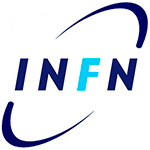Dr. Faezeh Mousavi
Practical discrete-variable and continuous-variable quantum communication protocols with coherent and squeezed states
Regarding the fundamental concern of security in classical cryptosystems, quantum cryptography (QC) plays a heartsome role in unconditional secure networks based on quantum mechanical laws. Quantum Key Distribution (QKD) and Quantum Secure Direct Communication (QSDC), are two advanced solutions for the approaches of QC, the former based on the key negotiation and the latter via direct transmission of secret messages without setting up a private key. These QC schemes have been developed over the optical fiber and free-space channels, both in discrete-variable (DV) and continuous-variable (CV) encodings. For DV implementations, the key bits are typically encoded on the polarization, phase, or arrival time of pulses, and single-photon detectors are employed; while in CV approaches, encoding is on the quadratures of quantized electromagnetic fields (e.g. coherent and squeezed states) via homodyne detection. We are interested in the entire QC development, where the experiments gradually move from proof-of-principle lab demonstrations to in-field implementations. On proof-of-principle steps, we worked on the demonstration of a CV-QSDC protocol over the optical fiber channel. The CV scheme is preferred due to its lower costs, excellent integrability with existing optical communication systems, easy implementation from state preparation to measurement, and fast experimental realization. It was also theoretically proved that using squeezed states shows higher tolerance in purely lossy channels and enhanced robustness against highly noisy ones. Thus, we utilized both coherent and squeezed states to investigate their performance in our protocol. Based on the applier of squeezing, we analytically and numerically studied the security of two different configurations as symmetric or asymmetric; and considered two scenarios regarding the locked and random phases of coherent states. According to the higher secrecy capacity and more practicability, we implemented the asymmetric protocol with the perpendicular direction of squeezing against phase-locked coherent states. Our measurements and numerical results against beam splitter attack agreed together and revealed the advantage of squeezed states over coherent ones for achieving higher secrecy. On in-field steps, we pursue the DV-QKD protocols along free-space channels between fixed (shore) and moving (ultimately the ship) parties, to achieve secure marine communications. Accordingly, we considered a three-state one-decoy weak-coherent BB84 protocol with time-bin encoding and a finite-key analysis method. We designed a practical configuration to initially perform the protocol between two parties over a lab-scale channel, then enlarge the terrestrial channel length via telescopes. In this configuration, we also investigate the effects of atmospheric turbulence on security, verify the tracking system for long channels between moving parties, and consider the phase noise on the protocol.





